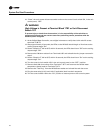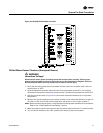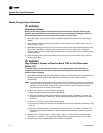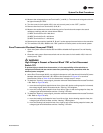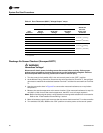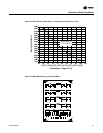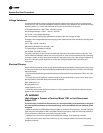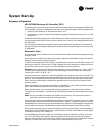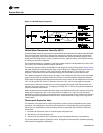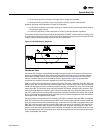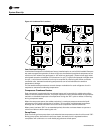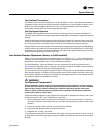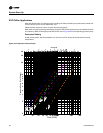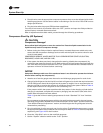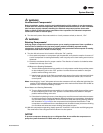
84 SS-SVX09A-EN
System Start-Up
Chilled Water Temperature Controller (6U11)
The chilled water temperature controller used with EVP chiller applications is a Honeywell W7100G.
This microprocessor controller is designed to maintain an average leaving water temperature
using an integrating control band concept that matches the required operating capacity to the
chiller load. The integral action, unlike “proportional only” type controllers, minimizes the amount
of offset from the control setpoint.
The control band setting is centered on the leaving water setpoint. It is adjustable from 0ºF to 10ºF
[0ºC to 6ºC] and is used to stabilize system operation.
The control algorithm used by the W7100G to add stages of cooling is illustrated in Figure 42. As
the water temperature rises above the upper control band limit, a stage of mechanical cooling is
added, provided the minimum “Off” time has been satisfied (Point A). The minimum “fast
response” time and the time delay between staging for the W7100G is set for 60 seconds.
If the water temperature remains above the upper control band limit (Point B), the next available
stage of cooling will be energized when the minimum time delay between stages has elapsed.
As the water temperature decreases below the lower control band, the last stage that was turned
“On” will be cycled “Off” (Point C) when the minimum “On” time for that stage has elapsed.
As the load on the water increases due to cooling stages being cycled “Off”, the controller will
maintain it’s current position, i.e., no staging of cooling “On” or “Off”, as long as the temperature
remains inside the control band.
When the temperature increases above the upper control band limit (Point D), mechanical cooling
stages will be sequenced “On” in the same manner as before. As a rule, any time the water
temperature is above the upper control band limit, a stage of cooling will be “added” and anytime
the water temperature decreases below the lower control band limit, a stage of cooling will be
“Subtracted”.
Thermostatic Expansion Valve
The reliability and performance of the refrigeration system is heavily dependent upon proper
expansion valve adjustment. Therefore, the importance of maintaining the proper superheat
cannot be over emphasized. Accurate measurements of superheat will provide the following
information.
1. How well the expansion valve is controlling the refrigerant flow.
2. The efficiency of the evaporator coil.
3. The amount of protection the compressor is receiving against flooding or overheating.
The recommended range for superheat is 10 to 16 degrees at the evaporator. Systems operating
with less than 10 degrees of superheat:
Figure 41. W7100A Staging Sequence



